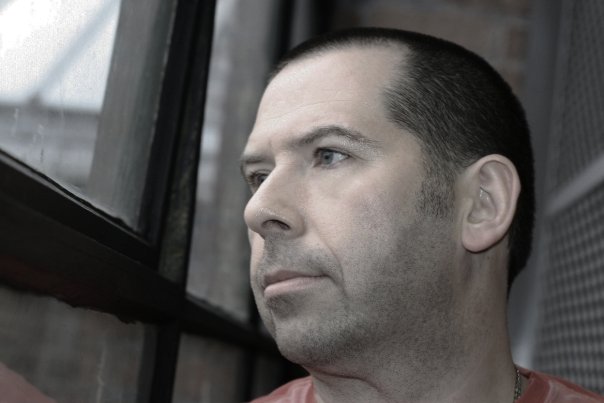
Merry Christmas!
As a thank you to all of my readers to your support over the last year I would like to present you with a nice Christmas present – an Andy Farley Trade special!
Over the past couple of years hard house legend Andy Farley (above) has put together two massive tributes to Trade, perhaps the most famous (or infamous) London gay club event of the last twenty years. Each tribute has included eight mixes covering over ten hours of Trade classics, from groovy US house through to full-power nu-nrg. Before today, these mixes were only available from upload sites like Megaupload, so I have now provided them with the permanent home that they deserve. The other thing that I have done is to split each mix into individual tracks, so now all of the mixes are now available as both a single mp3 and as a zip file of the individual tracks, with each mix series now also featuring a cover that I have done with the help of some Trade dancefloor images sourced from Flickr, the photo website.
To accompany the mixes, Andy very graciously agreed to be interviewed over the phone, and you can read the transcript of our conversation below, where he talks about his memories of Trade, his favourite Trade dj’s, the influence of the Trade ethos on his own career, as well as the story behind these mixes.
First, though, here are the links to the mixes:
Click here for Andy Farley’s Trade Memories
Click here for Andy Farley’s Trade Memories 2
One more point – a few months ago I downloaded a documentary about Trade (and it was watching that that gave me the idea to get in touch with Andy about hosting the Trade tributes), but I’m no good with video, so if you are able to chop an hour long video into segments and upload them to video, let me know in the comments and I’ll be in touch.
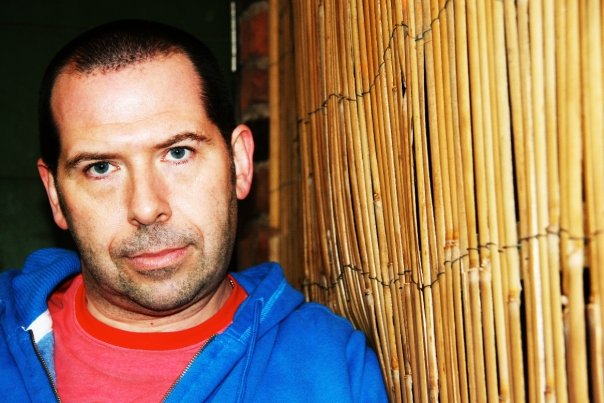
The Interview: Andy Farley talks Trade
All photos taken from the Andy Farley Facebook page
Pearsall: Obviously these mixes were a massive undertaking – doing two eight-hour sets is something that you would only do for something very special, so I guess the first question would be what has Trade meant to you over the years and what has made it such a special club night?
Andy Farley: For me, it’s the musical aspect.
Trade was always a big influence on me, because the night would start off with house music and then build it up to hard house and full on NRG, so it was kind of a benchmark for me. I’ve always mixed like that anyways, progressed my sets from starting off with a slower speed and building up to a major peak, and Trade kind of sealed that for me, because you’d hear people like Steve Thomas go from a set that was house music over two hours right up to tunes on Tinrib. Which was a really good progression, you know, from sort of 132 bpm up to 145 and upwards.
For me, Trade was the musical progression and the style of music that was played. When I first started going there, ‘hard house’ wasn’t the term that was bandied about, that was just the music that was played there, you knew it as ‘Trade music,’ and hard house has always been that for me, really.
The music that I heard at Trade has always been an influence on the tunes that I make and the tunes that I play. They’ve always been in that vein – it’s had lots of influence over what I’ve done in the past couple of years.
Pearsall: So you’re saying that Trade has played an ongoing role in how you think about music?
Andy: Yeah, plus the dj’s as well.
Steve Thomas, Tony de Vit, Ian M, Pete Wardman – they were all big influences on the music I’ve played and my music style.
At Trade, you could always tell who was playing when, since they all had their own individual style, because where Trade was, at Turnmills, you couldn’t really see the dj, since it was an enclosed dj box and they were sort of shut away to the side, so it was more about the music. You’d know which dj was on by …
Pearsall: What they were playing?
Andy: Yeah, what they were playing, and the style of mixing. You could just tell – different people would mix in differently, as in how they worked the volume controls and the EQ. So you could tell who was on straight away by that.
So, yeah, lots of different influences from the different dj’s.
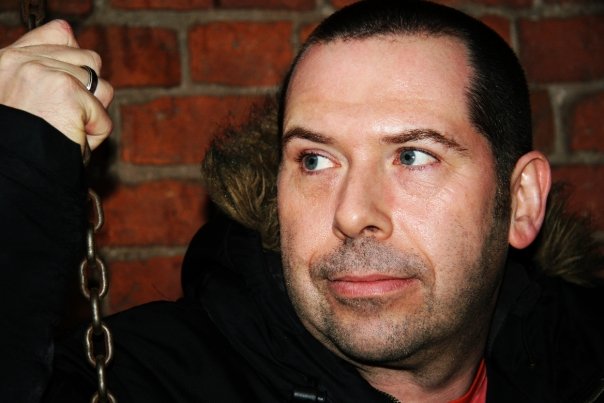
Pearsall: So did you have a favourite amongst the different Trade dj’s?
Andy: Tony, definitely. I knew Tony since 1987, when he used to dj at some different nights in Birmingham, and he actually told me to enter the dj competition that they had at the Nightingale in 1990 and that’s how I got my first residency. So he sort of helped me on the way to getting that.
I always knew him anyways, following his career, and the music he played.
The other one was Steve Thomas, just for his musical ear. He was playing tunes by Timo Maas and Olav Basovski way way way before people had heard of them. His set would contain house, techno, hard house, and it was that mixing up of different styles that really inspired me. He turned me on to techno a little bit – he would play two or three techno tunes in a row that were quite stripped down and then come in with a really big hard house tune after that, which was a really big influence on me when I started doing some techno stuff a few years after that.
Pearsall: So did you spend a lot of time going there as a punter over the years?
Andy: As much as I could!
It was difficult for me. I first went to Trade in about 1996, so by that time I was busy myself dj-ing, but on the odd weekend that I would have off we’d all go down. We’d get a group together, hire a mini-bus and drive down. So, probably four or five times a year we’d try and get down.
The excitement – we’d all try and sleep before we left Birmingham at two o’ clock in the morning, but none of us could ever sleep because we were so excited about going down.
And then we’d leave there at about one o’clock in the afternoon and then come back and probably go to something like Sundissential on Sunday afternoon/evening.
Pearsall: You played at Trade a few times, didn’t you?
Andy: Yeah, the first time was in 2002. I did a four hour set for the Tony de Vit memorial, and I played back-to-back with Emma Doubell. It was a real honour – for someone who had been such a big influence on me, it was very special to play at his memorial.
Turnmills, as a club, was one of the best clubs in the UK. It was designed for the dj – the dj booth was enclosed, the sound was fantastic, and when you were in that dj booth and you would look out across the dancefloor and you would see the lazers going, the smoke, the strobes – it was just amazing.
The atmosphere in there was just, well …
It’s hard to describe it, really. I used to call it ‘the Trade roar’ – when the bassline kicks in, or a breakdown’s building up to kick back in – the noise from the dancefloor was just amazing.
At the last Trade at Turnmills I was dancing on the main floor and I’ve put my hand up in the air as the tune was kicking in and it was that packed that I couldn’t get my arm down! And that’s what Trade always used to be like, packed to the rafters and people just going for it every weekend.
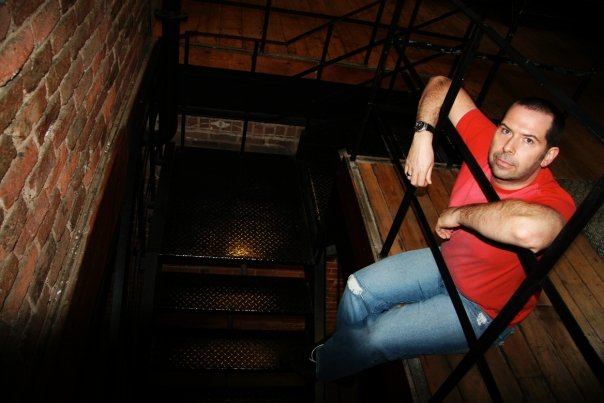
Pearsall: So what made you decide to do the mixes?
Andy: The main reason I did the first set was because when the very last Trade at Turnmills was on I just wanted to have all my favourite tunes to listen to on the way there and back, so I thought what’s the best way to do it?
Well, there was only one way to do it, and that was to do it like a journey at Trade from start to finish, as if you’d gone down. So that’s how it started out – all my favourite tunes just for me.
I gave them to JP of JP & Jukesey, and he said you should put those up for people to download, they would love ’em. I hadn’t really thought about it, since I’d just done them for me and friends, but when I put them up they did so well – I think that there were downloaded over 1000 times, that when someone said, “Please do another set! Please do another set!” I said, “Why not?” and did the second set about a year and a half later.
Pearsall: Did you record the sets in one hit, in one eight-hour session, or did you break it up?
Andy: I did them in about two hour batches. I’d do two hours, and then the next two hours, and so on.
Pearsall: How hard was it to pick the tunes out? I know you’ve got a big collection – I think I remember reading on Banging Tunes that you’ve got about 50,000 records.
Andy: Yeah, about that!
The first one wasn’t that hard, because I knew the tunes I liked, so I just went to the shelf and pulled them off. The second set wasn’t harder, but … The first one has all the big big choons, so for the second one it wasn’t hard to find the tunes, but I would think about it a bit more. I’d look at tunes and go “oh yeah, I can put that one on.” I tried to go for the less obvious tunes for the second set.
The thing with Trade was that there were so many different eras of Trade. It started in 1990, so the first era was from about 1990 to about 1994, and that was the full-on Belgian techno, and the hard house sound developed out of that, from about ’94 onwards, what is called the Trade sound today. So there were different eras of Trade, and for the mixes I didn’t really touch the stuff from back in 1990.
Pearsall: Yeah, it’s the mid-90’s to about 2000-ish that you’ve put on there.
Andy: Yeah, that’s what you would class as the ‘traditional’ Trade sound.
I’ve thought about doing a third set, but I’ve not had the time – maybe in January when it’s a bit quieter.
Pearsall: What’s been the reaction to the sets? Have you had a good reaction both from Trade veterans as well as people who never experienced the club?
Andy: Yeah, all sorts of people have commented on them. I know some people who’ve been going to Trade since day one, and they downloaded them and said that they’ve brought back so many memories. It’s done that for me, so I’m glad that it’s done that for other people.
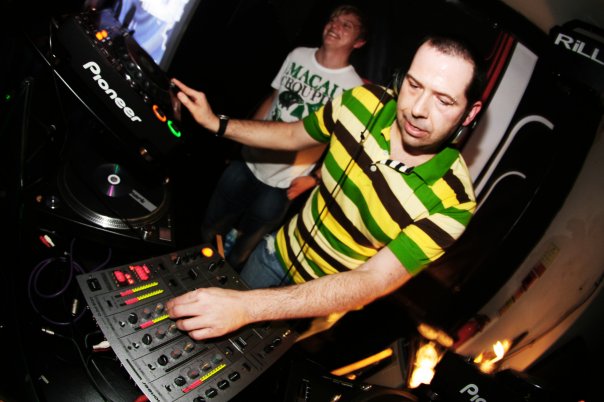
Pearsall: I think that’s pretty much it. Do you want to add anything else about the mixes, or Trade, or whatever?
Andy: I just want to say that for anyone who has been to Trade and seen how it is, and how it works musically, I just hope that what I’ve done is a good reflection of it!